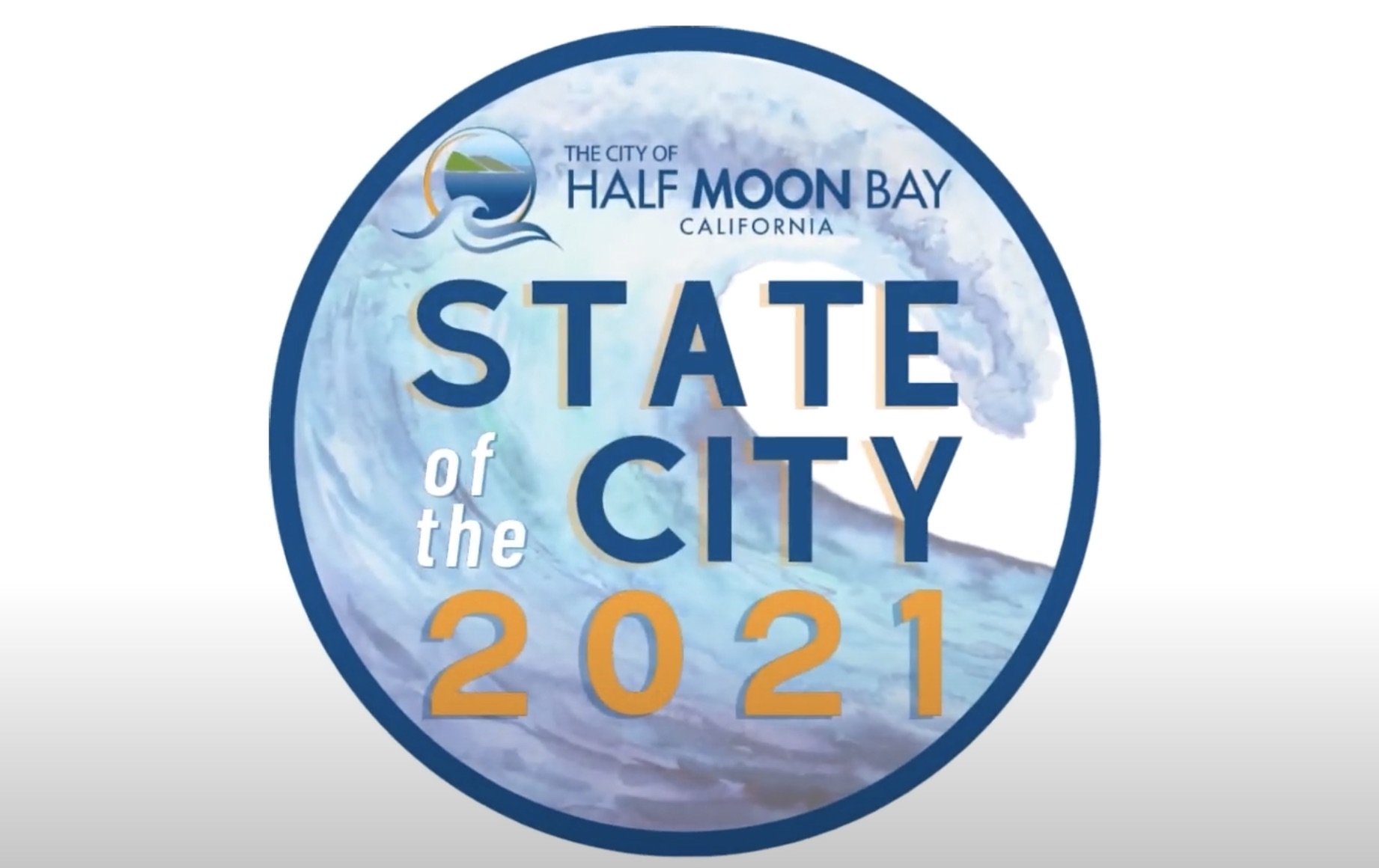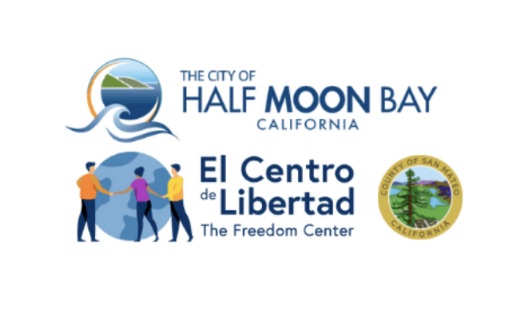|
Getting your Trinity Audio player ready...
|
VIDEO. From the City of Half Moon Bay’s Second Redistricting Advisory Committee Special Meeting on Thursday, August 12th, 2021, by Zoom and recorded by Pacific Coast TV (PCTV).
Half Moon Bay’s Second Redistricting Advisory Committee Special Meeting
Thu August 12 @ 7:00 pm – 9:00 pm

Many of you were interested and involved in creating the original boundaries for the City Council’s districts in 2018. Now, the once-a-decade redrawing of those boundaries, using information from the 2020 Census, is about to take place – your involvement is crucial.
At this workshop, the City’s consultant will provide information about how and when the community can submit their own suggested draft maps, instructions on how to do so, plus offer an overview of the various laws and regulations governing how districts can be drawn. There will also be a discussion on communities of interest, along with ample opportunity for those in attendance to provide their input, ideas, suggestions, and ask questions.
The more public participation we have, the more the final district map will accurately reflect our community. This is a very important process and opportunity that comes up only once every 10 years. Help us think inside the lines as we redraw City Council districts – make sure your voice is heard!
For information and background about districts, visit the City’s redistricting webpage at hmbcity.org/redistricting, and DrawHMB.org, where you can review the existing district boundary maps and make your own suggested adjustments when public mapping opens. Paper map kits will also be available.
- August 12 (RAC meeting) – Public/Committee Workshop – mapping, legislation
- August 19 (RAC meeting) – Public/Committee Workshop – district model, election sequencing
- August 26 (RAC meeting) – Public Hearing #1
- September 2 (RAC meeting) – Public Hearing #2
- November 8 (RAC meeting) – Review first drafts of maps, select 3 – 5 for further focus
- December 16 (RAC meeting) – Narrow down to 2 – 3 maps for further focus
- January 19 (City Council meeting) – Public Hearing #3, review focus maps
- January 22 (RAC meeting) – Public workshop – input on focus maps
- January 27 (RAC meeting) – Public workshop – input on focus maps
- February 15 (City Council meeting) – Public Hearing #4, final map selection and election sequencing March 15 (City Council meeting) – Adoption of ordinance adopting district map and election sequencing
First Redistricting Advisory Committee Special Meeting Agenda – 7/15/2021
VIDEO. From the City of Half Moon Bay Redistricting Advisory Committee meeting on Thursday, July 15th, 2021 at 7:00pm by Zoom
HMB City Council Begins the 2021 CVRA Redistricting Process That is Being Forced on Californians
VIDEO. From the May 4th, 2021 City of Half Moon Bay City Council meeting.
PRESS RELEASE.
- Committee members must be residents of Half Moon Bay, and at least 18 years old.
- Half Moon Bay elected officials, their family members, staff members, or paid campaign staff are not eligible to serve on the Committee.
- The selection process will consider applicants associated with good government, civil rights, civic engagement, and community groups or organizations that are active in the City with the goal of forming a Committee with membership that is geographically diverse and consistent with the City’s emphasis on valuing diversity, equity, and inclusion.
From the American Enterprise Institute
A court challenge to California’s racial gerrymandering mandate
With the nation’s attention elsewhere, the U.S. Supreme Court was petitioned recently to take up Higginson v. Becerra, a case that challenges the constitutionality of the California Voting Rights Act.
If the justices accept the case and declare it unconstitutional, as they should, hundreds of California cities, school districts, and other jurisdictions that have been forced to adopt racially gerrymandered, single-member election districts during the last few years may choose to restore their previous nonracial forms of governance.
This is an important case, not only for Californians, but for the rest of the nation. In striking down the constitutionality of the CVRA, the court could restore the need for local California elected officials to build bridges between racial groups and represent the needs of their entire community, rather than a single racial or ethnic faction. It would represent an important victory in the endless battle against identity politics in California and throughout the country.
This case goes back to 2002, when California’s legislature, dissatisfied with a decision of the U.S. Supreme Court that narrowed the use of race and ethnicity in creating election districts, passed the CVRA. The law essentially overturned the high court’s opinion, making it easier for racial and ethnic minorities to sue and demand racially gerrymandered voting districts.
Any city or school board that elected its members from at-large voting districts would now be at risk of being sued if minority candidates lost. All that was needed to prevail in a lawsuit was to show that minority candidates — usually Hispanics — weren’t being elected to office because of “racially polarized voting.”
So if white voters vote to elect a white candidate over a Hispanic one in an at-large election, then the system is rotten and must be changed. That is the crux of the CVRA. Unsurprisingly, the legislation had the support of left-leaning groups such as the American Civil Liberties Union, Mexican American Legal Defense and Educational Fund, and the Lawyers’ Committee for Civil Rights Under Law.
But the U.S. Supreme Court’s interpretation of when and how at-large voting systems are unfair to minorities is vastly different from what the CVRA now requires. In a 1986 redistricting case, justices created an empirically-driven, multi-part test to determine whether minority voters were being treated unfairly. While “racially polarized voting” is an element of the test, it is only one of the components a challenger must prove.
In contrast, the CVRA makes race or ethnicity the sole criteria in governmental decision making. This falls outside of what the U.S. Constitution allows.
Soon after the CVRA became law, a handful of aggressively clever California lawyers got busy recruiting plaintiffs to challenge the voting systems of dozens of jurisdictions. Initially, a few fought back, including the towns of Modesto and Palmdale. They lost and were forced to pay millions of dollars in legal fees and expenses. Since then, every jurisdiction even threatened with a lawsuit has immediately caved. By one estimate, about $20 million in legal fees to plaintiffs’ attorneys has been paid since the CVRA became law.
In 2017, the City of Poway (pop. 49,704) received a certified letter from attorney Kevin Shenkman asserting that Poway’s decades-old, at-large city council election system violates the CVRA. Shenkman wrote that “voting within Poway is racially polarized, resulting in minority vote dilution” and therefore must change, even though Poway’s Hispanic population is only 16% compared to 40% overall in California.
Based on the fees and expenses other jurisdictions had incurred in fighting Shenkman, Poway agreed to change its system. During the city council meeting to approve the settlement every member of the council voiced their objection to the changes the CVRA was forcing the city to make. One council member said that he was “proud of the job we do … but we have a gun to our heads, and we have no choice.”
Don Higginson, a former Poway councilman and mayor, was not going to watch this happen to the citizens he represented for over two decades. So, shortly after the council voted to adopt race-based districts, he sued California in federal court alleging the CVRA was a violation of the 14th Amendment. After a few years of legal wrangling, the U.S. Ninth Circuit Court of Appeals ruled against Higginson. He has appealed to the Supreme Court.
Much of this is going to be familiar to the justices on the high court, should they take the case. As Justice Sandra Day O’Connor wrote nearly 30 years ago, “Racial gerrymandering, even for remedial purposes, may balkanize us into competing racial factions; it threatens to carry us further from the goal of a political system in which race no longer matters — a goal that the Fourteenth and Fifteenth Amendments embody, and to which the Nation continues to aspire.”
O’Connor was right. And this law intentionally results in “divvying us up by race,” as Chief Justice John Roberts has previously put it. It drives racial-identity politics and leads to — indeed, requires — the creation of racially gerrymandered voting districts. All of this ultimately inhibits the creation of election districts and forms of governance in which the race and ethnicity of voters and their representatives become inconsequential.
The intent of the CVRA was to make race and ethnicity the only factors in how jurisdictions choose to govern themselves. Laws like this one will continue to fray the social fabric that holds us together as a nation. Let’s hope the justices take the case and strike it down.
City Council of Half Moon Bay Meets ~ 1st and 3rd Tuesdays at 7:00pm

HMB City Council Agendas and Zoom Links
HMB City Calendar
The New Now ~ Virtual Remote Public Agency Meetings
- streamed live on Comcast Channel 27 and Pacific Coast TV website
- the City’s website online (via Granicus)
- and on Facebook Live
- one in English (City of Half Moon Bay FB Page)
- one in Spanish (City of Half Moon Bay Recreation FB Page)
- Recorded by Pacific Coast TV (PCTV)
Members or the public are welcome to submit comments (in accordance with the three-minute per speaker limit) via email
 ing – (650) 477-4963 (English) and (650) 445-3090 (Spanish).
ing – (650) 477-4963 (English) and (650) 445-3090 (Spanish).HMB City Council Agendas and Zoom Links
HMB City Calendar
Leave messages with the Clerk’s Department at 650-726-8250
-
-
Debbie Ruddock
Vice MayorPhone: 650-726 -
Joaquin Jimenez
Council MemberPhone: 650-726-8250 (leave message with Clerk’s office)
-
The City Council of Half Moon Bay
Half Moon Bay City Council Subcommittees
- CSFA Grant Selection
- Education
- Emergency Preparedness
- Finance
- Human Resources
- Legislative Affairs
- Mobility








